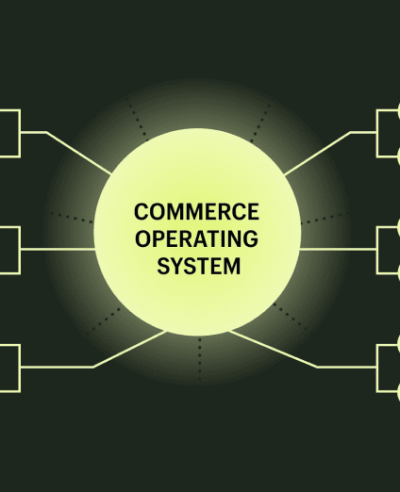- SolutionsGo BackShopify PlusStay ahead of the curve with top-tier e-commerce techCommerce OperationsGrow your e-commerce business and marketplaceAI for CommerceReinvent commerce in the AI ageIn-house SpecialistsTop e-commerce specialists in a dedicated team setupDigital ServicesCustom services for brands
- Work
- Insights
- Join us
- SolutionsGo BackShopify PlusStay ahead of the curve with top-tier e-commerce techCommerce OperationsGrow your e-commerce business and marketplaceAI for CommerceReinvent commerce in the AI ageIn-house SpecialistsTop e-commerce specialists in a dedicated team setupDigital ServicesCustom services for brands
- Work
- Insights
- Join us
- fr
- en
The 10 Questions Everyone Asks About Marketplaces

Marketplaces: 10 questions to ask yourself (profitability, choice, price)
Marketplaces can accelerate growth… if they’re run with rigor. Profitability, brand control, price coherence, technical and logistics integration: this guide answers, point by point, the 10 questions teams ask when getting started (or optimising what’s already live).
Goal: turn marketplaces into a controlled revenue engine — not a cost centre.
1. Why sell on marketplaces?
Key benefits:
- Access a large audience and qualified traffic.
- Increase sales volume without rebuilding the entire funnel.
- Diversify distribution channels to smooth risk.
- Limit development costs (acquisition, stack, international rollout).
- Test new products and markets quickly.
What this implies: set objectives (revenue, margin, market share), pick platforms aligned with your positioning, define governance for content/pricing/service.
2. Is selling on marketplaces really profitable?
Not always — and that’s the point. Profitability depends on net margins, commissions, logistics costs, advertising, returns, and hidden costs (catalogue ops, customer care, integration).
Profit-first method:
- Calculate net margin per SKU and per channel (post-commission, logistics, marketing, returns).
- Define a break-even point and minimum ROAS by category.
- Choose a logistics promise (service level, lead times) compatible with margin.
- Scale only what’s profitable, automate the rest.
At Horrea, we structure your marketplace activity to be profitable from the first orders and scalable over time (automation, data, profit-over-volume steering).
3. How do I choose which marketplaces to sell on?
To prioritise the right platforms, ask the right questions:
- Positioning (generalist, specialist, premium, discount) vs your strategy and target.
- Incremental revenue potential (audience, market share, competition, strong categories).
- Costs to factor in (commissions, service fees, trade marketing) vs target profit rate.
- Ease of integration (aggregator, connectors) and associated costs.
- Logistics compatibility (cross-border, delivery promise, returns).
Practical tool: build a scoring grid (brand fit, audience, costs, tech, SLAs) and prioritise 2–4 platforms at launch.
4. I already have my own site — why open a marketplace shop?
Marketplaces bring additional volume and reach new audiences without massively increasing your acquisition budget. The key is differentiation:
- Curate distinct assortments/offers per channel.
- Keep exclusives and premium services on your own site.
- Synchronise the brand narrative without copy-pasting.
Takeaway: marketplaces complement your site — they don’t replace it.
5. Will my brand lose control of its image on marketplaces?
A legitimate concern… that can become an opportunity. With a tight editorial strategy, optimised product pages, and a selective presence, you keep control over how products are presented, found, and compared.
Concrete standards: content guidelines (tone, messages, benefits), approved visuals, up-to-date legal information, and monitoring of key pages.
6. Will marketplaces degrade my premium positioning?
Not if the strategy is well designed.
What we recommend:
- Select only channels compatible with your brand DNA.
- Assess each platform (values, audience, practices across content/pricing/service).
- Reject “volume-first” approaches that ignore brand coherence.
- Favour partners that value content, product education, and service excellence.
Example: better to be on 3 perfectly aligned marketplaces than 10 poorly managed ones.
7. How do I keep price coherence between my site and marketplaces?
Price coherence is non-negotiable: customers compare, and platforms penalise unjustified gaps. Aim for a clear omnichannel strategy that respects:
- Your price lists and DTC objectives.
- Your reseller commitments.
Levers: dynamic pricing, offer/pack differentiation, and cross-channel governance to avoid cannibalisation and make channels add up intelligently.
8. Third-party resellers publish wrong product info — what can I do?
This is the biggest risk without an official presence: poorly filled pages, weak visuals, outdated info. Result: brand damage and lower conversion.
The answer:
- Centralise product content distribution (images, descriptions, key benefits) via a PIM/feed.
- Enforce standards and audit pages regularly.
- Control visuals, promises, and legal information.
By mastering your data, you protect your image — and your business.
9. What resources should we plan for launching on a marketplace?
Running a marketplace shop impacts your transversal teams, especially as volume grows: order admin, customer service, logistics, accounting. This model requires specific adaptations and a clear organisation.
Good news: if automation is in place from day one, the impact can remain limited. Processes, ownership, SLAs, and team rituals make the difference.
At Horrea, we synchronise with your teams (order admin, logistics, finance, content…) and implement tools and routines that lighten the workload.
10. How long does it take to launch?
Timelines depend on the flexibility of your IS and, above all, on the completeness of your product data. With clear scoping and clean feeds, go-live is fast.
Horrea commitment: first marketplace sales within 100 days, whatever your starting maturity — subject to timely access to the required data and infrastructure.
In short
- Profit first: scale what’s profitable, automate the rest.
- Brand control: editorial, visual and legal standards, with monitoring.
- Omnichannel coherence: pricing/assortment/experience that reinforce each other.
What this implies / Takeaways for your brand
- Define clear KPIs: net margin per SKU/channel, ROAS, cost-to-serve, NPS.
- Choose 2–4 platforms aligned with your brand DNA and P&L.
- Tool up your integration (PIM/ERP/OMS/aggregator) to secure data quality.
- Standardise content (templates, guidelines, QA) and pricing.
- Anticipate organisation (roles, SLAs, rituals) and logistics (returns, cross-border)
Horrea, concretely
We integrate, secure, and deploy your marketplace operations with your teams.
- Our belief: a marketplace is only profitable and durable when data, offer, pricing, and experience are orchestrated.
- What we do: profit-first scoping, platform selection/contracting, PIM/ERP/OMS integration, content & on-page SEO optimisation, pricing rules, automation, unified reporting.
- Promise delivered: decide faster, understand margins, deliver without friction, reassure your teams.
- Want to move forward? We can walk you through a typical case and our method in 45 minutes.











